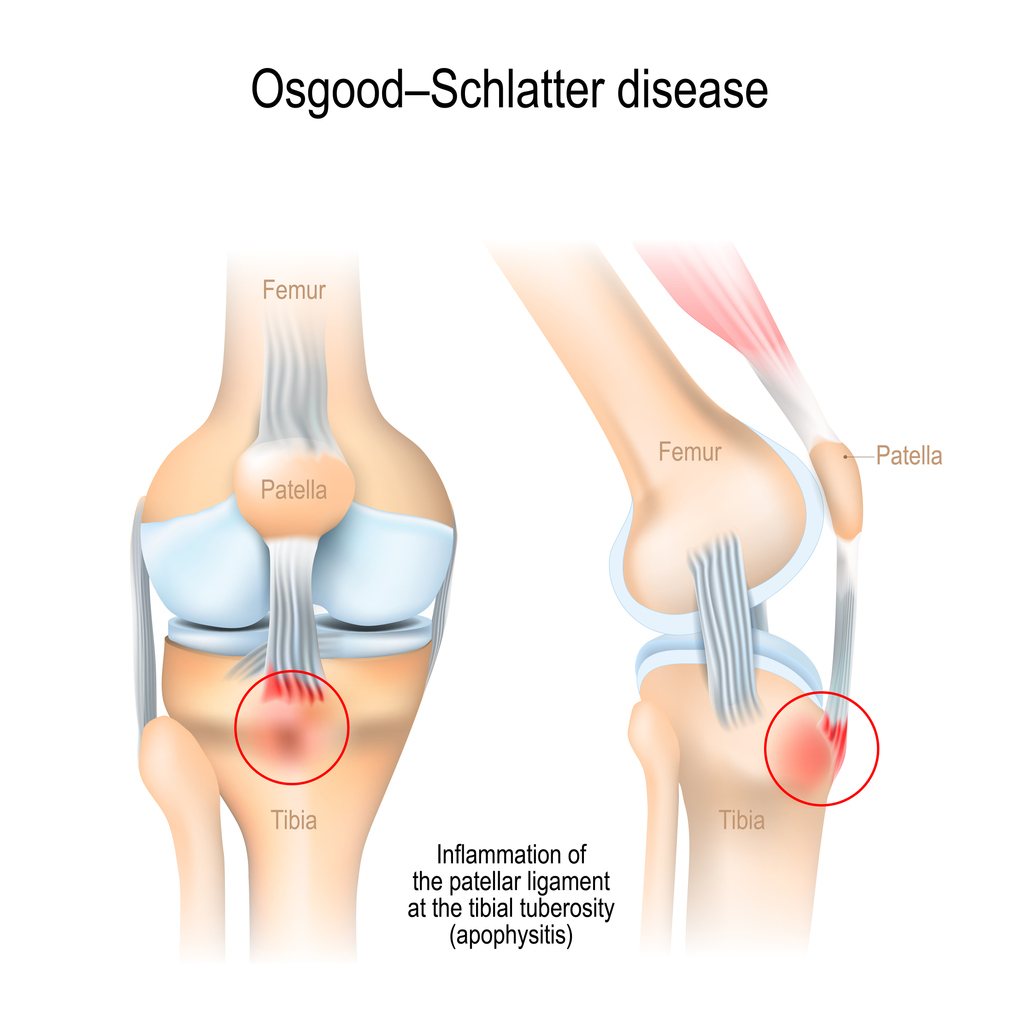Pain
Diagnosing Osgood-Schlatter Disease

What is Osgood-Schlatter disease?
Osgood-Schlatter disease is one of the most common causes of knee pain in children and teenagers. It may result in a lump under the kneecap and can affect one or both knees. Inflammation and pain occur below the knee joint, where the tendon in the kneecap (patella tendon) joins the top of the shinbone (tibia).
This condition usually develops during growth spurts, between the ages of 8-13 in females and 10-15 in males. It is most dominant in adolescent athletes who participate in sports that require running or jumping.
Diagnosis
Diagnosing Osgood-Schlatter disease is often a simple process. A health care professional will obtain a medical history and perform a physical exam. An X-ray may be ordered to rule out other issues or take a close look at the bone. The affected person’s age and participation in physical activities will also be taken into consideration.
- Health history. A health care professional will gather symptoms, including the type and location of pain. They will also collect a list of physical activities, such as sports that include running, jumping, or rapid direction changes.
- Physical examination. A physical exam will be performed to check for signs of redness, pain, swelling and tenderness. Any lump under the kneecap will also be evaluated.
- X-ray. An X-ray may be ordered to look more closely at the area and inspect the bone. This also helps rule out other possible causes of knee pain, such as a fracture.





